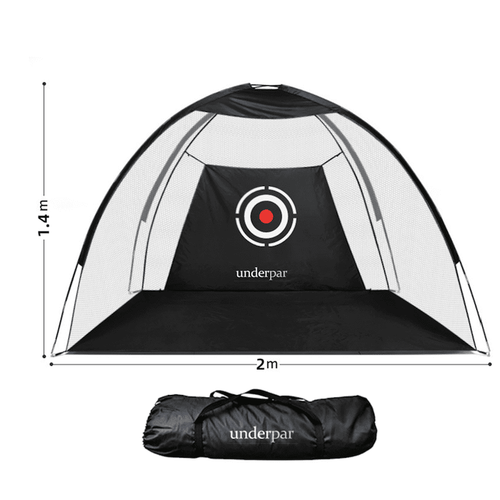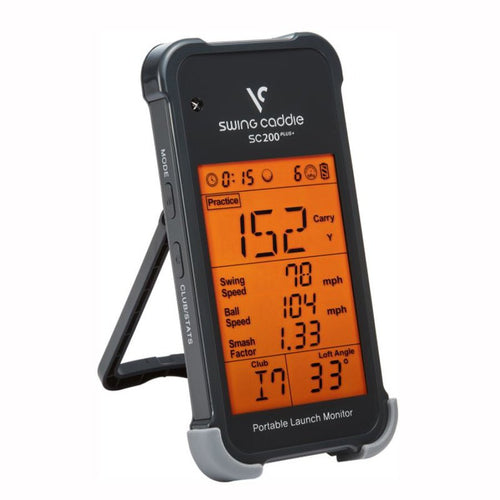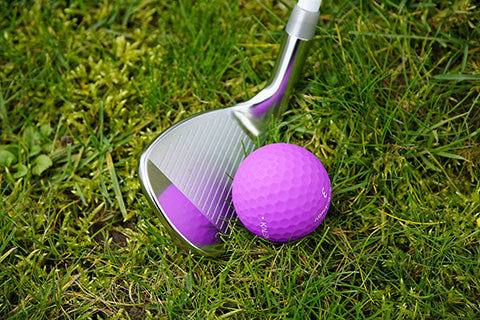Some might think golf is fairly simple to play. However, as you get better at it and your interest grows, there seem to be a ton of new terms and concepts that you have to learn — for instance, the golf club bounce.
Not only do you have to learn the terminology for the game, like eagle, birdie, and bogey, but now you’ll have to learn all there is to know about your most crucial pieces of equipment: your clubs!
Bounce is one such term. You aren't alone if you were wondering what bounce is in golf clubs. Many golfers, even seasoned ones, may struggle to understand bounce, and choosing the right bounce for your wedges only makes it more challenging.
In this blog post, we’ll talk about the bounce in a golf club, how it works, and how to pick the best one to skyrocket your game!
What is Bounce on Golf Clubs?
The bounce is the angle of a golf club sole's line to the ground. To be more precise, bounce is the angle formed by the leading edge of the club sole and the ground upon contact. The bounce angle indicates how much the sole of the club head lifts the leading edge.
Angles between 12 to 15 degrees are considered to be a high bounce. In this case, the club’s sole lifts the leading edge considerably, and it might not be able to touch the ground. Instead, the trailing edge will rest on the surface.
When a golf club has low bounce, its leading edge touches the ground almost completely. Having no bounce signifies that its sole is flush with the ground.
Wedge bounce can now range in intensity depending on the kind of wedge you are using. A sand wedge typically has the highest bounce, while a lob wedge typically has the least.
The bounce of a pitching wedge typically ranges from 2 to 5 degrees, that of a gap wedge from 5 to 10, that of a lob wedge from 0 to 10, and that of a sand wedge from 10 to 16.

Looking for good and affordable Wedges? Check out our collection!
How Does Bounce Work?
The degree of bounce describes how far your wedge will bounce before making contact with the ball. This implies that although the bigger bounce numbers may bounce or even glide across the lawn, the smaller bounce numbers will tend to sink into the ground. This is because wedges with greater bounce have larger soles than the majority.
Stronger loft angles, such as those seen on wedges like a gap wedge, typically have loft angles between 48 and 54 degrees, and this is where you'll generally encounter lower bounces.
On softer conditions, the larger soles of the larger bounces will allow you to glide your clubs across the ground before striking the ball.

To improve your hits, training is essential. Take a look at the UnderPar® Golf Hitting Net.
What Is The Importance Of Bounce
Bounce is crucial since it gives the club qualities that make it simple to hit from several different lies. The club "bounces" through the sand instead of burrowing into the ground at impact because of the curvature on the sole.
When using wedges, you should strive to match the bounce to the turf conditions. Higher bounce numbers typically have more curvature and are good from sand, but a lower bounce is preferred with reduced curvature when playing off tougher turf.

Make every shot count with the easy-to-use Swing Caddie SC200 Plus Launch Monitor!
How to Choose the Right Bounce for Your Clubs
Examining the courses you play the most often will help you determine the right bounce for your golf clubs. Choosing the right bounce depends on where you're playing, whether on a firm or soft fairway. Generally speaking, softer circumstances result in more bounce.
For players who take very little divot and firm conditions, low bounce wedges are ideal. A wedge with a low bounce tends to cut or dig into the turf.
High bounce wedges are ideal when playing in softer conditions or for players who take larger divots. A wedge with a high bounce rate will typically cut through the grass without digging.
Bounce and Wedges
So what is the purpose of bounce in golf clubs, and why are they matter more for wedges?
You’ll find the answer just below!
What is the Purpose of Bounce in Wedges?
You’ll have to choose the appropriate wedge bounce and grind setting for the best contact, control, and ball spin. In all wedge strokes, the bounce offers forgiveness and a margin for error, allowing the golfer to still strike the ball correctly even if he or she makes a mistake.
How to Use the Bounce on a Wedge
Using the club's bounce to glide underneath the ball and make a firm contact can help you get the maximum consistency out of your wedges. There is a great video tutorial by Titleist explaining how to use bounce in wedges.
According to Thomas Valdez, a GOLFTEC instructor, "[bounce] functions like if you hit a slip 'n slide."
He continues: "It's going to strike behind the ball, accelerate underneath the ball, and kick up into the air. And that will enable the bounce to move underneath the ball, produce a small amount of spin, and raise the ball into the air”.
Wedge Bounce Chart
Now you know what the bounce is in a golf club, here’s a chart to help you understand better the appropriate bounce for your wedges.
|
Bounce |
Angle |
|
Low |
4º to 6º |
|
Mid |
7º to 10º |
|
High |
> 10º |
Frequent Questions About Bounce in Golf Clubs
Do you have any questions? Perhaps you’ll find some of the answers in our FAQ.
Is high or low bounce easier to hit?
Better players can use less bounce because the leading edge is significantly smaller, allowing them to be more inventive with strokes like flop shots near the green. Additionally, because the edge is much sharper, it aids in imparting backspin on the ball; hence, if a golfer hits the ball precisely, he or she will produce excellent backspin.
Does 1 Degree of Bounce Make a Difference?
Running over the surface as opposed to cutting into it is better for a club's performance, so the higher the degree of bounce, the better. A one-degree variation in bounce angle has little impact, but a four- or five-degree adjustment significantly impacts how the club plays.
How Much Bounce is Too Much?
If the sole's back has visible wear, there might be too much bounce. Given the prominence of the sole in the strike, you might also see severe wear under the heel. If only the front edge's vicinity exhibits any signs of wear, there is insufficient contact between the sole and the ground, and there is too little bounce.
 Reviews on
Reviews on 


